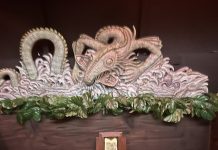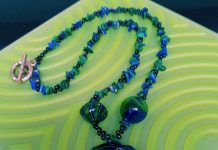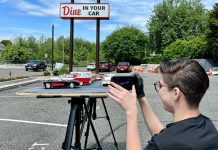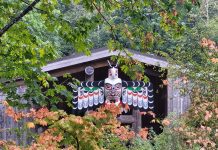Did you know you could take a trip to a quiet brick street in the middle of downtown Auburn roughly 100 years ago? Or visit a farming family from around that same era and see a one-room schoolhouse and a Muckleshoot village?
These scenes reside in the heart of modern-day Auburn. You won’t just learn about the past at this hidden treasure but touch, hear, and walk right through it at White River Valley Museum.
Back to the Roots of Auburn
Of course, the story here starts long before any human activity, with the ever-changing paths of rivers. A detailed map at the museum’s entrance demonstrates how the White River and surrounding waterways cut through the region, eventually reshaped by human engineering to help develop more consistent farming areas.
The result was a region known for its natural bounty, including the towns of Auburn, Pacific, Algona, and Kent. However, the museum takes great care to showcase the histories of the first people to call the land home.

The Muckleshoot Tribe has spent centuries utilizing the area’s natural resources, fishing, harvesting crops, and raising their families along the river.
But from the 1800s onward, a steady stream of settlers came to the region, drawn by the same lush land and opportunities.
You can explore these legacies in the first two galleries, walking across the dusty floor of an original settler’s cabin from the 1800s or strolling the length of a traditional canoe used for gathering hops. Smaller objects show off the rituals of daily life, from beautiful blue beads to the fine china that pioneers packed in wagons across the West. And that’s just the start of the story.

A Mosaic of Cultures at White River Valley Museum
The next room is a veritable United Nations of stories, tracing immigrants’ many paths to the valley. One informational plaque explains, “Every pioneer to this valley was an immigrant.”
While all these groups left their mark, the Japanese immigrant community was among the most prominent, growing crops and raising large families that became pillars of the community. A recreated farmhouse shows off the details of their lives, from carts full of freshly harvested strawberries to the traditional meal laid out in the kitchen.
These ties are still strong today, showcased by the temporary exhibit “Dancing With Our Ancestors.” With costumes, music, and posters commemorating the Bon Odori festival — a Japanese-American holiday celebrating the legacies of ancestors that have passed on — it was the perfect link from past to present.

White River Valley Museum Offers a Walk Through Time
Next, it’s time to step into the rhythms of a long-gone version of Auburn, which was once a bustling railroad town.
Step into the lobby of the aptly named Tourist Hotel, where travelers would stop for a rest. Then, peek into the rail depot, filled with telegraph machines that literally kept every train on track.
Take a trip to the hat shop for festive garb, or swing by the pharmacy to pick up a little glass bottle for whatever ails you. Be sure to pop by the stables, where little visitors can take a trip on Sandy, the mechanical horse.
And don’t miss the beautiful pieces of terra cotta in the back, relics from an artistic local industry that transformed nearby clay deposits into breathtaking works that still grace buildings in the area today.
But the pièce de résistance is Caboose #1394, a replica of train cars from the 1920s. Step inside, and you’ll see firsthand how people used to travel in style.

Never A Dull Moment at Auburn’s White River Valley Museum
These exhibits are worth several visits in their own right, but there’s always something new (well, old, but you get the idea) to keep you coming back.
A series of rotating exhibits and seasonal events offer even more opportunities to explore history and community. On November 11, the museum will host a celebration of Native American Heritage Month. On November 20, there will be an opening reception for their temporary exhibit, “A Very Dickens Christmas” — just in time for the holidays!
And when the summer rolls around, kids of all ages can get more in touch with the land at the Mary Olson Farm, which shows off the agricultural way of life that has always been so important to the region.
Whether you’re a lifelong learner or a history novice, this portal to the past will offer you a world of delights right in your own backyard.
White River Valley Museum is located at 918 H Street SE in Auburn. It is open from Wednesday to Sunday, from 12 to 4 p.m. Admission is free, but donations are welcomed. For more information about the collections and upcoming events, you can check out their website or their Facebook page.


































